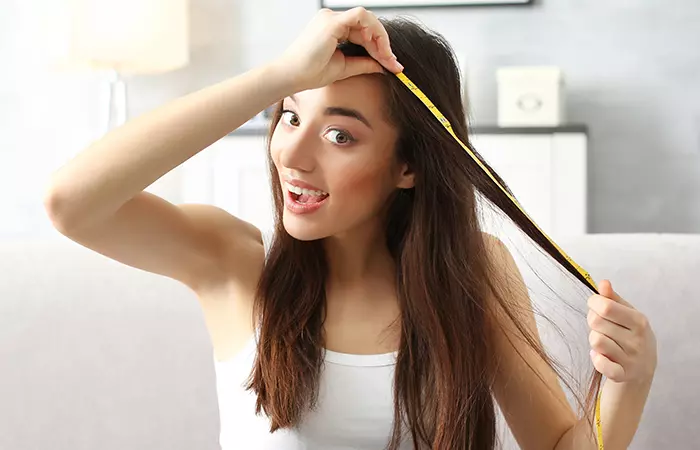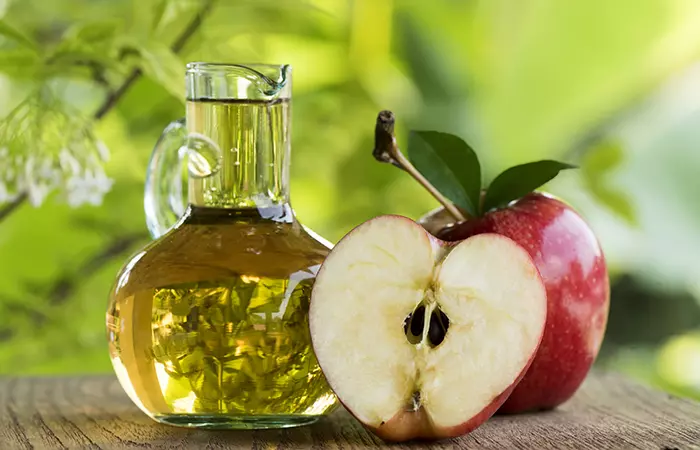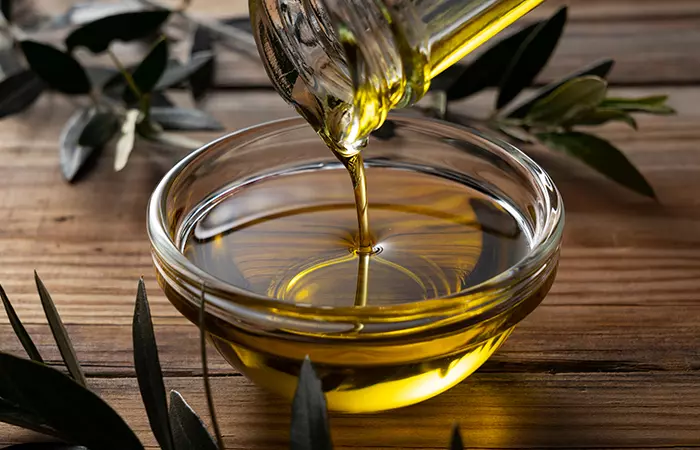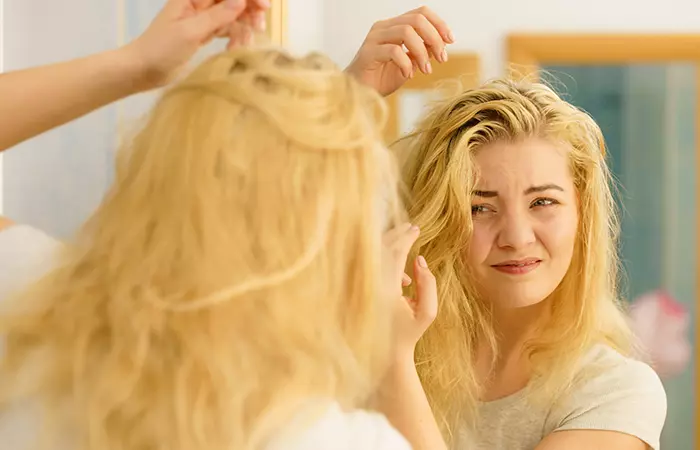The benefits of beeswax for hair grooming and hair care have been recognized since ancient times. Beeswax is thought to have been used by Cleopatra to make her hair and skin more beautiful. The Chinese have been using it for their cosmetics and beauty rituals for centuries as well. Beeswax contains antioxidants that protect and keep the hair moisturized, preventing dryness and frizz. And while it has been used as a waxing ingredient, it is also excellent for nourishing and styling your hair! In this article, we will look at the hair care benefits of beeswax. Scroll down to learn how it works and how to use it!
What Is Beeswax?
Beeswax is the substance that makes up the honeycomb. Bees excrete wax to build honeycombs to store honey. It is rich in vitamin A and has moisturizing and antimicrobial properties (1). People use it in its wax form on their hair.
Keep reading to learn about all the benefits beeswax can offer for your hair.
Benefits Of Beeswax For Hair
There are several ways that beeswax can help your hair. The top 5 benefits of beeswax on hair are listed below.
1. Moisturizes And Seals Strands
Image: Shutterstock
Beeswax is rich in vitamin A, which is said to moisturize the hair. However, there is poor scientific evidence in this regard. The wax is said to serve as a sealant to maintain moisture in the hair strands. You can use it lightly to coat the hair strands so that the wax traps in moisture and smoothens down frizzy or broken ends. Although it won’t provide a lasting solution, it will temporarily improve the hair’s appearance.
2. Does Not Cause Allergic Reactions
Overusing products with hazardous ingredients can damage your hair strands. Beeswax is organic, and does not contain any toxins that could damage hair. Additionally, it is chemically safe, making it an excellent option for hair nourishment.
3. Promotes Hair Growth
Image: Shutterstock
Beeswax can enhance hair growth. An animal study discovered that using hair wax comprising beeswax increases the length of the subjects’ hair within 30 days (2). Other studies also found improvement in hair growth upon using hair formulations made with beeswax (3). However, it is challenging to ascertain whether beeswax, in particular, contributed to hair growth because the formula contained other ingredients as well. But these studies showed that beeswax improved the application process, allowing for even spreading of the formulation across hair strands and improving its binding properties, thereby aiding hair growth (3).
4. Helps Soothe Certain Dermatological Conditions
Seborrheic dermatitis is a common skin disorder that primarily affects the scalp. It results in scaly patches, irritated skin, and chronic dandruff. Beeswax can help prevent and improve this condition. In a study examining the benefits of beeswax on people with psoriasis, eczema, and dandruff, researchers found that candidates who used a honey mixture containing beeswax experienced improvement after 2 weeks (4).
5. Maintains Long-Wearing Hairstyles
Beeswax is widely used for dreadlocks because it helps the hair stay in place. You can easily combine beeswax with a hair butter or carrier oil to make a styling treatment to help set your hairdo. It is excellent for natural hair and twisted and braided styles.
These are the major benefits of beeswax for your tresses. But what is the best way to apply the wax to your hair? Keep reading to find out.
How To Use Beeswax For Hair
The simplest and most recommended approach to incorporating beeswax into your hair care regimen is to use it as a styling balm or pomade.
What To Do
- Take a small amount of beeswax.
- Rub it between your palms until it melts from the heat of your hands, making it easier to apply to the hair. Do not apply beeswax to your hair without doing this step.
- Massage the beeswax into your hair with your fingertips. Focus on getting it to the ends of the strands for better hold. Keep massaging the wax into your hair until there is no residue on your fingers.
- Once you have applied enough wax, style your hair gently with a comb or a brush. It is recommended to use a hair brush to spread the beeswax throughout your hair more evenly.
Now that you know how to use beeswax on your hair, check out a few things you need to remember in the next section.
Tips To Remember Before Using Beeswax For Your Hair
- You can create your own hair treatment by mixing beeswax with a carrier oil, like jojoba oil or coconut oil. Otherwise, just lightly reheat a little wax bar and apply it to damp hair.
- Using beeswax daily is not recommended, especially if you don’t wash your hair every day. This may result in additional product buildup on your scalp.
- Use just a little amount at once to avoid wasting time washing it out of your hair later.
- Wear a headscarf or other covering to protect your hair while sleeping. It will assist in protecting your smooth hair and reducing how often you need to use beeswax.
- People with fine hair or hair that gets greasy easily should avoid using beeswax. If you must, it is best to use a tiny amount.
- You can buy commercial styling blends containing beeswax. Make sure you read the label to confirm that you are satisfied with the ingredients.
 Did You Know?
Did You Know?These are the major benefits beeswax has for your tresses. But certain people instead prefer black beeswax to regular beeswax. Learn why in the next section.
Why Do People Use Black Beeswax For Hair?
People use black beeswax for hair as it is a natural and unprocessed alternative to regular beeswax. Black beeswax also helps retain moisture, boosts hair flexibility, and leaves your hair with a matte finish. It also gives a black tint to your hair and is often a popular choice for styling and grooming.
As easy as beeswax is to apply, washing it off can be a challenge. But the following DIY methods can help. Check them out.
How To Get Beeswax Out Of Your Hair
1. Apple Cider Vinegar Rinse
Image: Shutterstock
ACV is a natural remedy for maintaining healthy hair. Use it as part of your hair care regimen to remove beeswax from your hair. Its antibacterial and antimicrobial characteristics are claimed to revitalize the hair and scalp, repairing buildup-related damage.
You Will Need
- 2-4 tablespoons of apple cider vinegar
- 1 cup of water
- A spray bottle
What To Do
- Mix the ACV and water in a spray bottle.
- Apply the mixture to the scalp and hair.
- Massage the vinegar into your hair and scalp with your fingertips.
- Let the solution sit for up to 5 minutes.
- Use cool water to rinse it off.
- Follow up with a moisturizing conditioner.
- Finish with a final rinse to remove all of the vinegar and beeswax.
Caution:
Never use undiluted ACV on your skin or hair. Always dilute it with water to prevent irritation.
2. Clarifying Shampoo Rinse
One of the simplest ways to remove beeswax from your hair is to use a clarifying shampoo. These shampoos have exfoliating and cleansing properties that remove the flakes, debris, and greasy residue that beeswax accumulation leaves behind. The outcome is gorgeously clean hair.
You Will Need
- Clarifying shampoo
What To Do
- Wet your hair from root to tip to open up the hair shaft.
- Apply a little shampoo to your hands, then massage it into your scalp and hair.
- Once the product has been applied evenly throughout the hair, massage the scalp and hair. Refrain from scratching with your nails to avoid scalp irritation and bruises.
- Leave the shampoo in your hair for a few minutes for the best results.
- Rinse your hair.
- Condition and style your hair as desired.
For optimal results, use clarifying shampoo once a week.
3. Natural Oil
Image: Shutterstock
Use a natural oil to dissolve water-soluble beeswax. Light oils, such as olive oil, almond oil, or jojoba oil, may be helpful. Working any of these natural oils through the hair will help to break down the waxy buildup.
You Will Need
- 1–2 tablespoons of olive oil/almond oil/jojoba oil
What To Do
- Pour 1–2 tablespoons of oil into your palm and apply it on the beeswax with your fingertips.
- Massage oil through your hair until you detect beeswax softening and crumbling.
- Remove the beeswax from your hair.
- Wash your hair in hot water with shampoo, then condition it with conditioner.
- You should repeat this process if there is a lot of beeswax buildup.
4. Hair Dryer
Another efficient method for removing beeswax is using a blow dryer. The warm air from the dryer melts the wax and makes it easier to remove.
You Will Need
- A hair dryer
- Paper towels
What To Do
- Wrap paper towels around the beeswax-coated hair sections.
- Set the hairdryer to low-medium heat and direct it toward your locks through the paper.
- As the beeswax begins to melt, press down on it through the paper and take it out of your hair until it is gone.
- Use shampoo and hot water to wash your hair afterward, then condition it.
 Quick Tip
Quick Tip5. Dishwashing Soap
This method may seem crazy, but it is not surprising. Dish soap has high cleansing strength, similar to clarifying shampoo, which is necessary to remove tough beeswax from the hair. But, before using dishwashing soap, ensure it is suitable for your hair. Some dishwashing soaps can damage your natural curls.
You Will Need
- 2-3 drops of dishwashing soap
What To Do
- Wet your hair and scalp.
- Pour 2-3 drops of dish soap into your palms, then work it into a lather.
- Apply the soap to the full length of your hair, working your fingers through the beeswax.
- Rinse your hair, then shampoo and condition it.
Now that you know all the benefits of beeswax and how to use and remove it from your hair, it’s also vital to understand that it may have some side effects. Check them out by scrolling down!
Side Effects Of Beeswax For Hair
Image: Shutterstock
- Beeswax has a waxy/oily texture and is not water-soluble, which makes it difficult to remove. A simple hair wash will not cut it.
- When using pure beeswax, avoid getting it on your scalp. Beeswax is heavy and sticky and can clog the skin’s pores. This might irritate your scalp.
- Since beeswax is sticky, it can trap dust, dirt, and other debris in your strands.
- Beeswax may harden and appear as a whitish substance in your hair during cold weather, specifically if you have dark hair.
- Using too much beeswax can make your hair look heavy, lifeless, and unappealing over time.
Eden Croft, a YouTuber, talks about her experience of using beeswax on hair. She says how it can clean the pores and also act as a coat emulsifier in a shaving cream. She says, “I like to use it as a face wash (i).”
Infographic: Top Benefits Of Beeswax For Hair
Beeswax contains vitamin A and is an excellent moisturizer for hair. It not only aids in hair styling, but it also protects your hair from heat and increases its shine. In addition, it is a natural substance that does not damage your hair and scalp. Check out the infographic below for the top advantages of using beeswax on your hair.
Illustration: StyleCraze Design Team
The Bottom Line
Beeswax has been used for hair care for generations and with good reason. Since it is all-natural, it does not contain any of the dangerous chemicals found in other hair care products. It can be an excellent solution if you want to keep your hair straighter for longer, keep frizz in check, or soothe skin conditions. However, avoid using it excessively as it can build up on your scalp, leading to infections and damage. Also, be prepared to put in the effort to wash it out of your hair routinely.
Frequently Asked Questions
Does beeswax make hair shiny?
Yes, beeswax nourishes the hair strands and gives them a smoother, shinier appearance.
Does beeswax expire?
Pure and organic beeswax has no expiration date. It never goes bad and has a very long shelf life. Beeswax can be kept in a cool, dry environment for a long time and reheated when needed.
Which beeswax is better – white or yellow?
Whether it is yellow or white, beeswax generally has the same qualities. Due to the purification and refinement process, yellow beeswax can have a variety of shades. Yellow beeswax is the best option if you want something completely natural. The best bet in terms of purity is typically creamy yellow beeswax.
Can Beeswax Be Used For Hair Removal?
Yes, beeswax can be used for hair removal. You will find many hair removal and other cosmetic products containing beeswax. You can also make a hair removal mixture at home by mixing beeswax, resin, and essential oils.




